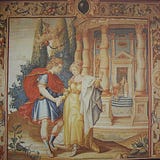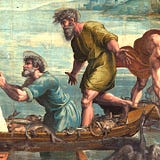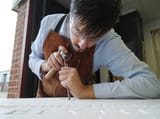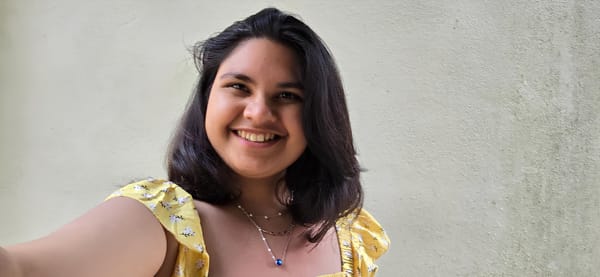The Raphael cartoons in Technicolor
Tapestries need drawings first and Raphael did many for Pope Leo X. Courtesy of his majesty the King since 1865, now on display in London!
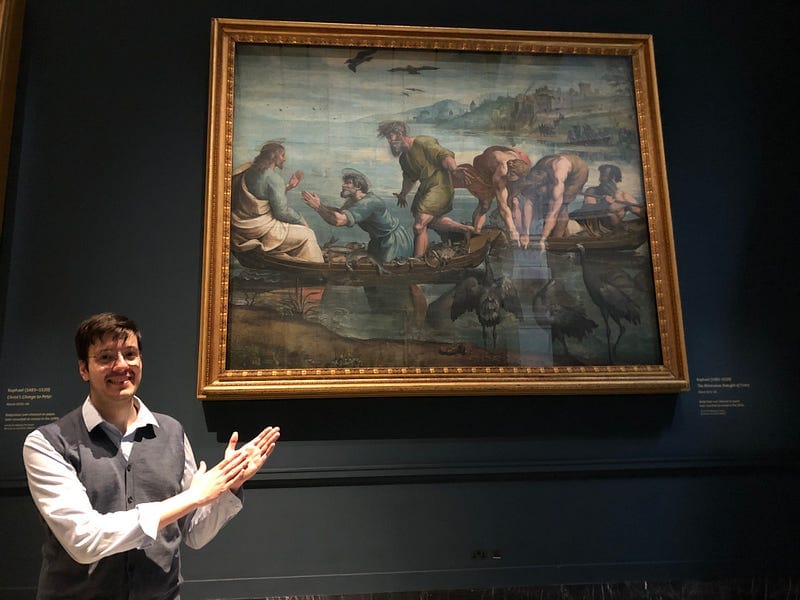
Tapestries need drawings first and Raphael did many for Pope Leo X. Courtesy of his majesty the King since 1865, now on display at the V&A Museum in London!
Welcome to this special article for the coronation of the King!
If you have ever been in the Vatican and seen the Tapestries of Raphael, you might have wondered “What happened to the original blueprints of those fantastic artworks?”
Well, they were purchased by Charles I in 1623, and are on loan from His Majesty The King to the Victoria & Albert Museum since 1865.
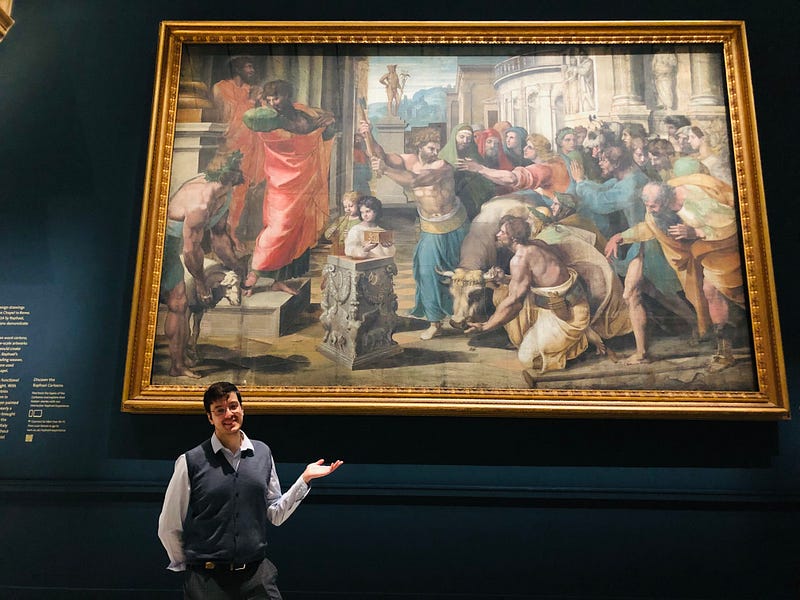
They are seven cartoons, executed by him and his studio for a series of tapestries commonly called the Acts of the Apostles (commissioned by Pope Leo X).
The tapestries were to be woven in the workshop of Pieter van Aelst in Brussels, and between 1515 and 1516 Raphael and his team painted ten full-scale ‘cartoons’ to serve as models for the weavers. The cartoons were painted in a thick gouache or bodycolour on many sheets of paper, overlapped and pasted together. Great care was devoted to the execution of the cartoons, and an unusually large proportion of the painting seems to be made by the master’s own hand (see picture below).
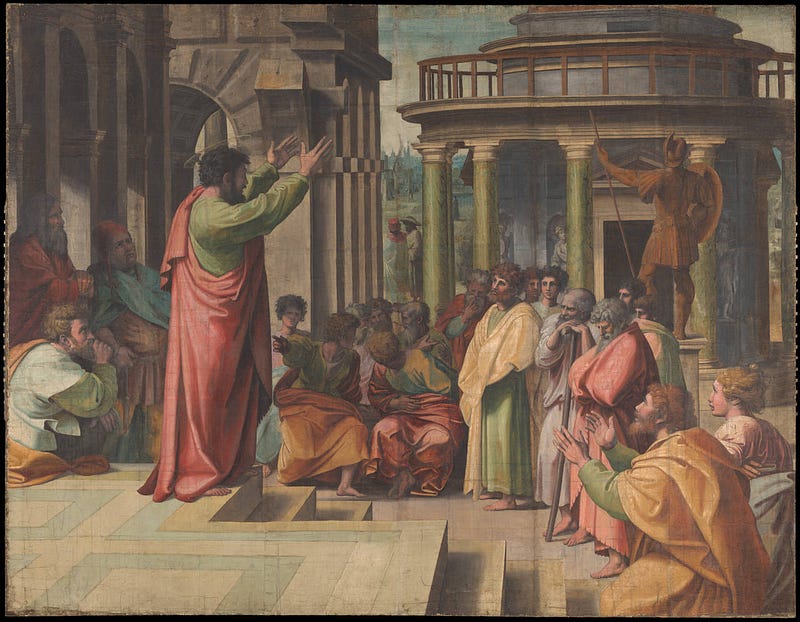
As you approach each cartoon, you’ll begin to notice the incredible level of detail that the artist has put into his designs. Each scene is packed with figures, and every person and object is rendered with incredible precision. The colours are rich and vibrant, and the shading and highlights give the images a sense of depth and dimensionality.
Raphael knew that the final product of his work would be produced by craftsmen rendering his design in another medium; his efforts are therefore entirely concentrated on strong compositions and broad effects, rather than felicitous handling or detail. It was partly this that made the designs so effective when later reproduced in reduced print versions.
Now, when I saw this I asked myself “If we have the drawings, surely these have been used to make multiple tapestries out of these, right?”.
My questions got answered pretty quickly when I was in that room and I saw the following work:
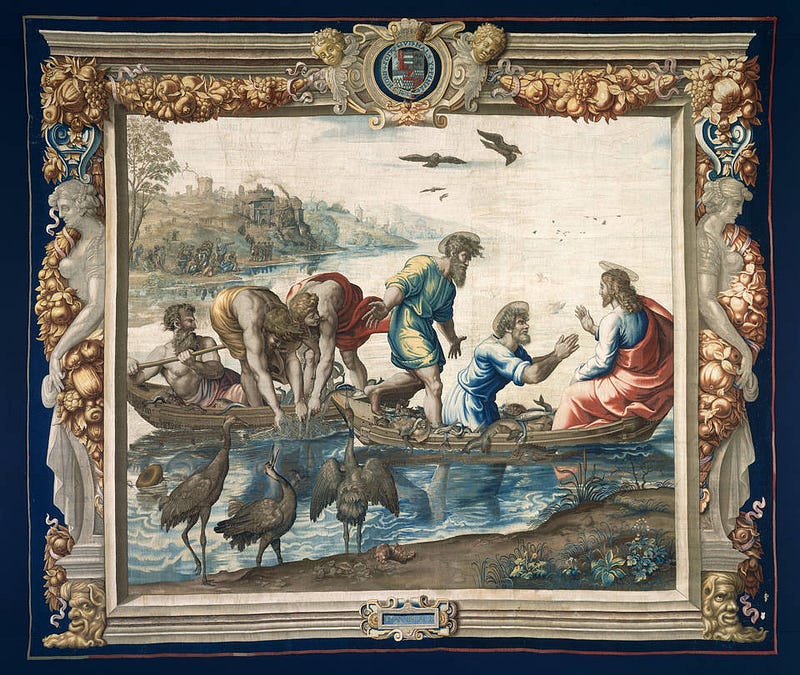
In London near the area of Mortlake, was founded a massive tapestry workshop specialized in complex commissions and guess what happened?
The German-born Francis Cleyn, who was the official designer at Mortlake, created full-scale copies of Raphael’s originals and a new series of tapestries were made for Charles I between 1626 and 1642. Following the monarch’s example, the British aristocracy commissioned sets for their own use, including the third Earl of Devonshire (1617–84), who commissioned a set for Chatsworth House, where they still hang today. The one above, which was made for the Earl of Pembroke can be seen on display in our Raphael Court, facing its corresponding Cartoon The Miraculous Draught of Fishes (picture above).
I hope you enjoyed the read and invite you all to come and visit this room, The drawings are masterpieces in their own right, and remind us of how design is transferable between multiple disciplines, even if they are far apart!
Don’t forget to clap, comment and subscribe if you liked the article. See you next!
P.S. Also if you are in the V&A, check the Weston Cast courtroom, of which I talked about here.
Useful links
